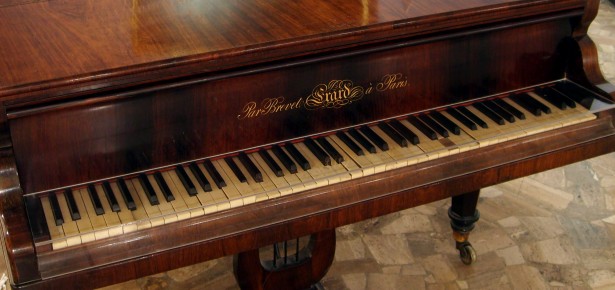
The day-to-day existence of a musical instrument builder of past centuries has long been shrouded in mystery. Although their instruments may survive, few other traces of the men and women who toiled in the workshops remain to attest to how they organised their work and dealt with their customers.
Imagine for a moment, however, that it would somehow be possible to surmount the historical barrier that separates us from these artisans and to eavesdrop on their conversations. We would be able to learn how they procured supplies, hired workers, took and processed orders, set prices, accepted payment, tried to collect on overdue bills, packed, shipped and repaired instruments and dealt with the countless problems of their profession.
In our book, The History of the Erard Piano and Harp, we present a major exception to the dearth of primary source material, one which allows us a rare and intimate view of the life of an instrument builder since the end of the eighteenth century: a book containing the copies that piano and harp makers Sébastien and Jean-Baptiste Erard meticulously made of their outgoing correspondence with customers and suppliers throughout Europe during the period 1791-97. Like the ‘Sent Mail’ folder of an e-mail application today, this book was an important tool for the Erard brothers to keep track of orders. This letter copy book is unique in the history of instrument building and perhaps in the history of eighteenth-century artisanal life in general. The details of workshop life are so vividly described that in reading the letters one can almost smell the sawdust on the floor in the Erard workshop at 37, rue du Mail in Paris.
Erard’s letter copy book depicts a surprisingly modern approach to selling instruments. Numerous contemporary business concepts are already present, at least in nascent form. For example, Erard is keen to inspire brand loyalty among his customers, through the wooing of successful musicians, teachers and dealers, and by offering substantial volume discounts. Erard sought out highly-skilled workers from abroad, enticing them with attractive salaries. Erard also displays a clear notion of customer service, reassuring his clients on every detail, from the efficiency of the packing and transport to the quality of his products. Virtually all of his letters, even those containing reproaches and threats of legal retaliation, are cloaked in the most ingratiating terms. Erard even seemed to subscribe to today’s ‘the customer is always right’ attitude, for example in a letter in which he agreed to comply with the request from a musician for a harp with pedals placed so low that, according to Erard, they could not possibly be used.
Sébastien Erard was also one of the most notable geniuses in the field of musical instrument manufacture, as is evidenced by his numerous inventions that are still used in today’s pianos and harps. The letter copy book demonstrates his keen business sense and his intent, from very early on in his career, to promote these inventions on a massive scale, effectively dominating the European instrument market for decades.
Latest Comments
Have your say!